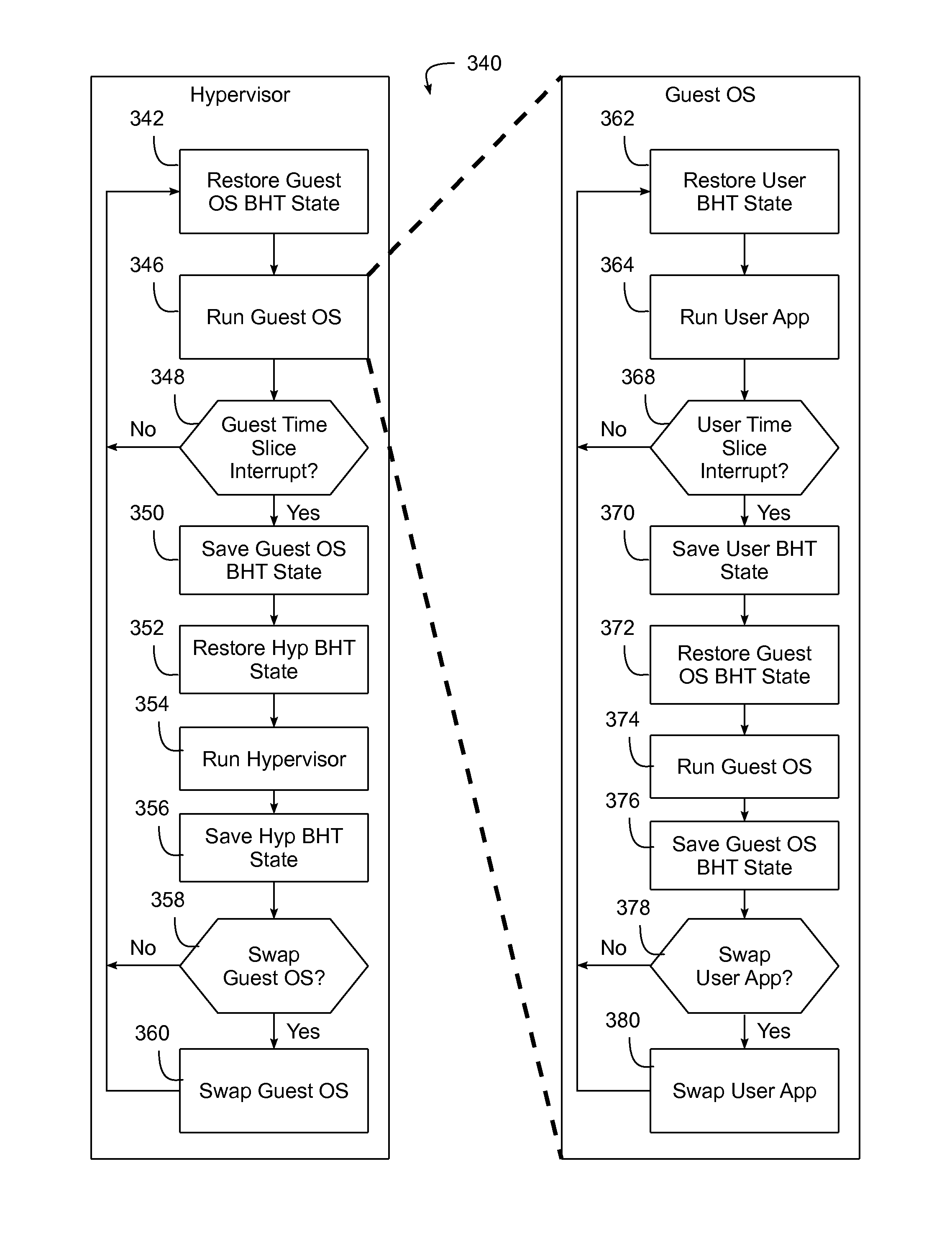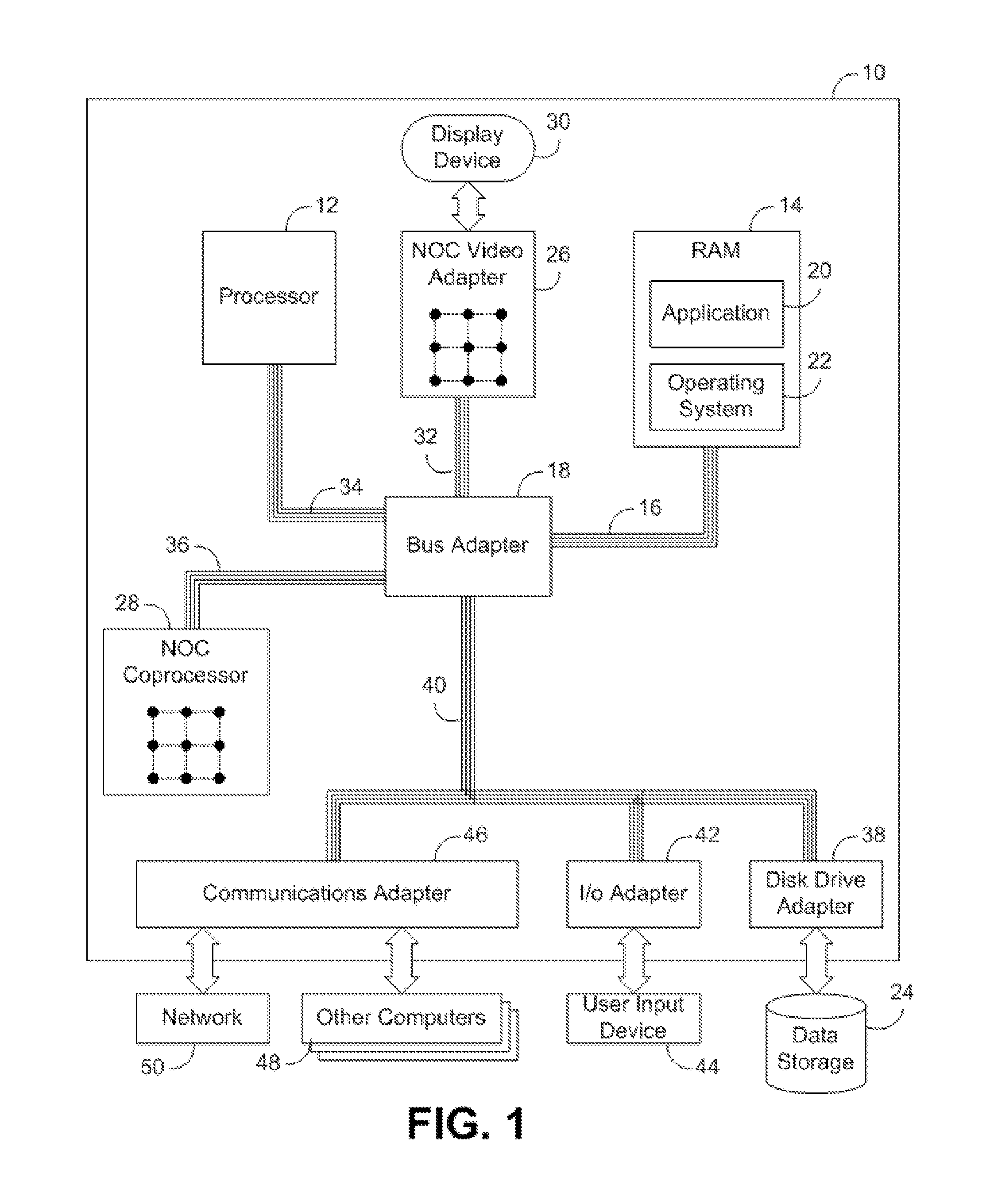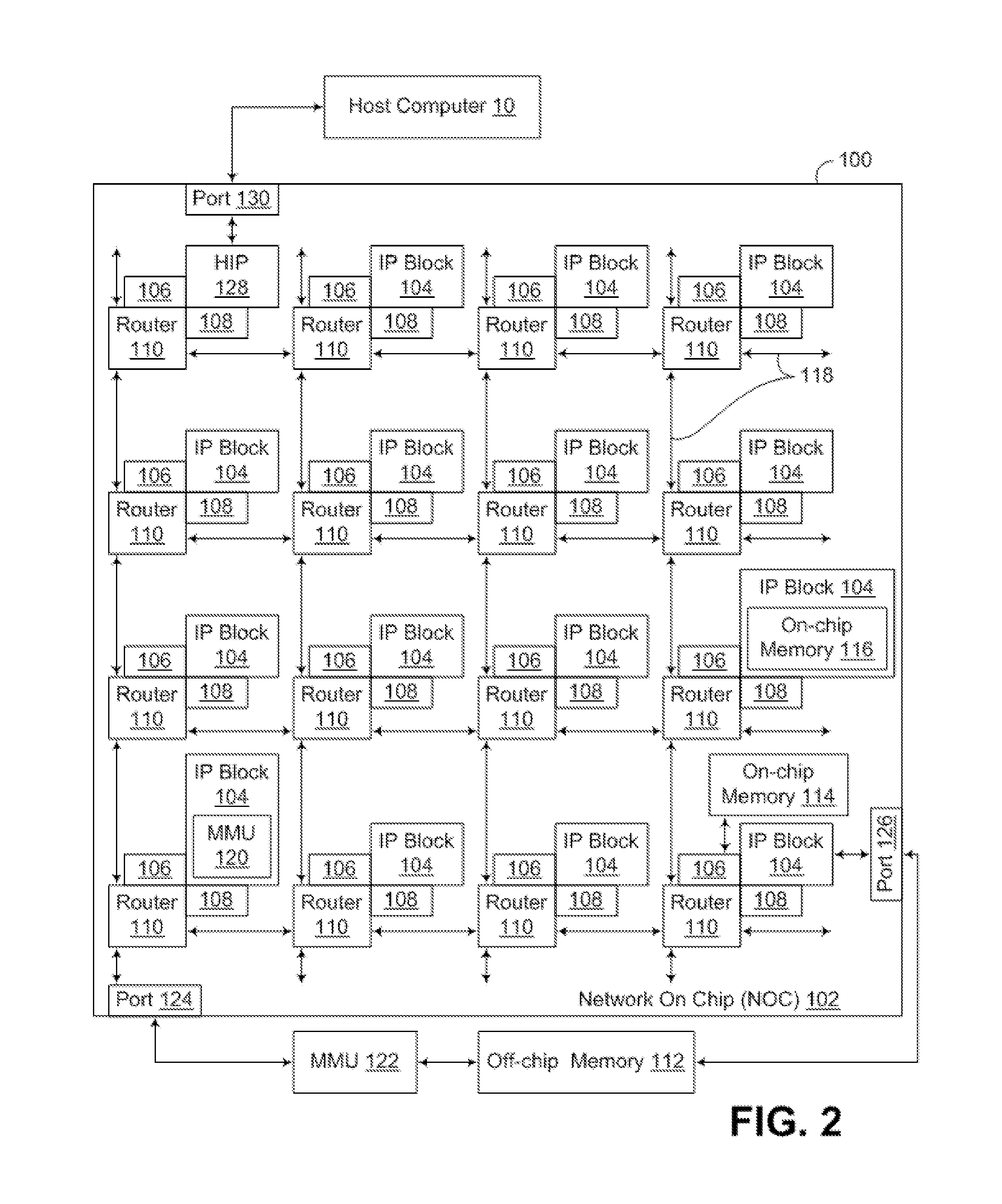System and method for selectively saving and restoring state of branch prediction logic through separate hypervisor-mode and guest-mode and/or user-mode instructions
a branch prediction and logic state technology, applied in concurrent instruction execution, instruments, computing, etc., can solve the problems of add to the amount of logic circuitry required to implement logic, and slow branch prediction logic in the processor, so as to achieve fine-grained optimization
- Summary
- Abstract
- Description
- Claims
- Application Information
AI Technical Summary
Benefits of technology
Problems solved by technology
Method used
Image
Examples
Embodiment Construction
[0030]Embodiments consistent with the invention utilize fine grained control of branch prediction logic through multiple levels of a virtualized data processing system to optimize branch prediction for different applications and workloads, thereby improving overall data processing system performance when handling different types of workloads.
[0031]In some embodiments, for example, a hypervisor and one or more guest operating systems resident in a data processing system and hosted by the hypervisor are configured to selectively enable or disable branch prediction logic through separate hypervisor-mode and guest-mode instructions. Similarly, in some embodiments, a hypervisor and one or more programs, e.g., guest operating systems and / or user processes or applications hosted by the hypervisor, to selectively save and restore the state of branch prediction logic through separate hypervisor-mode and guest-mode and / or user-mode instructions. By controlling branch prediction logic in one o...
PUM
 Login to View More
Login to View More Abstract
Description
Claims
Application Information
 Login to View More
Login to View More - R&D
- Intellectual Property
- Life Sciences
- Materials
- Tech Scout
- Unparalleled Data Quality
- Higher Quality Content
- 60% Fewer Hallucinations
Browse by: Latest US Patents, China's latest patents, Technical Efficacy Thesaurus, Application Domain, Technology Topic, Popular Technical Reports.
© 2025 PatSnap. All rights reserved.Legal|Privacy policy|Modern Slavery Act Transparency Statement|Sitemap|About US| Contact US: help@patsnap.com



